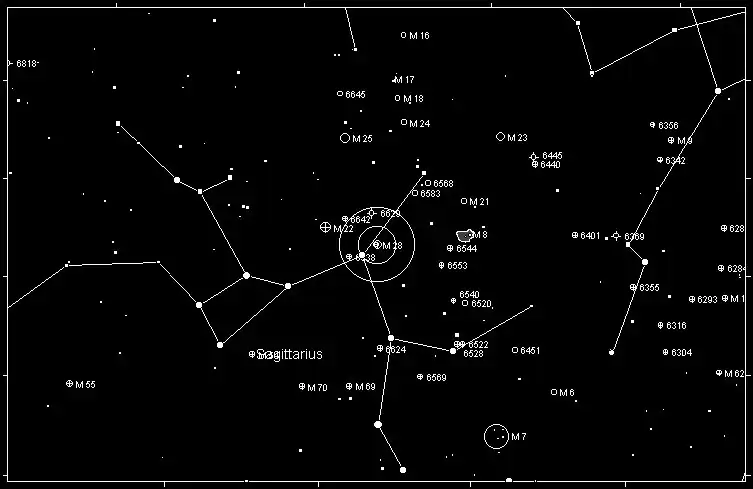Messier 28 (M28) is a globular cluster located in the constellation Sagittarius. Discovered by French astronomer Charles Messier in 1764, this dense collection of stars is one of the many globular clusters orbiting the Milky Way. It is about 18,000 light-years away from Earth, making it a relatively distant member of the Messier catalog. Despite its distance, M28 is visible with a small telescope, and even binoculars can reveal its presence in the sky.
Description and Magnitude
Messier 28 is a spherical collection of hundreds of thousands of stars, gravitationally bound together. It has an apparent magnitude of +6.9, which makes it just visible to the naked eye under very dark skies. However, in most locations with light pollution, binoculars or a small telescope are required to view it. The cluster spans approximately 15 arcminutes in diameter, which translates to a true diameter of about 60 light-years.
With a concentration of stars toward its core, M28 exhibits a bright central region, typical of globular clusters. The stars in this cluster are ancient, with an estimated age of about 12.5 billion years, and they primarily consist of older, redder stars.

Season and Visibility
M28 is best observed during the summer months in the Northern Hemisphere. The optimal time to observe it is from June to September when Sagittarius is high in the sky. This cluster is located near the Milky Way’s center, meaning it is situated in one of the richest regions of the night sky. It is visible from most parts of the world, although observers in the Southern Hemisphere have a slight advantage due to its more southerly location in the sky.
Constellation and Location
Messier 28 is found in the constellation Sagittarius, which is rich with deep-sky objects thanks to its position in the Milky Way. Sagittarius is also home to the bright asterism known as the "Teapot," which is often used by amateur astronomers to navigate the area. M28 is located just a little over 1 degree northwest of Kaus Borealis, the star at the top of the Teapot's lid.
How to Find M28
To locate Messier 28, begin by finding the constellation Sagittarius. The "Teapot" asterism is a useful guide. Once you have identified the Teapot, locate the star Kaus Borealis (Lambda Sagittarii), which marks the top of the Teapot's lid. From Kaus Borealis, move your telescope or binoculars just over 1 degree northwest to find the faint glow of M28.
Since M28 is relatively small and faint compared to brighter deep-sky objects, it is recommended to use a telescope with at least 4 to 6 inches of aperture for a better view. Under good viewing conditions, you should be able to resolve some of the individual stars around the edges of the cluster, while the core remains a dense, bright patch of light.

History of M28
Charles Messier discovered M28 on July 27, 1764. Like many other objects in his catalog, Messier included it to help distinguish it from comets, which were the primary focus of his astronomical work. Over time, M28 became an object of interest for astronomers studying globular clusters and the dynamics of the Milky Way galaxy.
In the late 20th century, M28 was found to contain a millisecond pulsar, known as PSR B1821-24, making it one of the few globular clusters known to host such an object. Millisecond pulsars are neutron stars that rotate extremely rapidly, and their presence in globular clusters provides insights into the stellar evolution of these dense star systems.
Additionally, studies have shown that M28 is one of the more centrally concentrated globular clusters, classified as a Class IV on the concentration scale, with Class I being the most concentrated. This indicates that M28 has undergone significant core collapse, resulting in a densely packed central region.
Conclusion
Messier 28 is a fascinating globular cluster located in the constellation Sagittarius. Its dense concentration of stars, ancient age, and discovery history make it a popular target for both amateur and professional astronomers. Best viewed during the summer months, this cluster can be found near the bright star Kaus Borealis in the Teapot asterism. With a small telescope or binoculars, observers can enjoy the sight of one of the many stellar jewels of the Milky Way.
